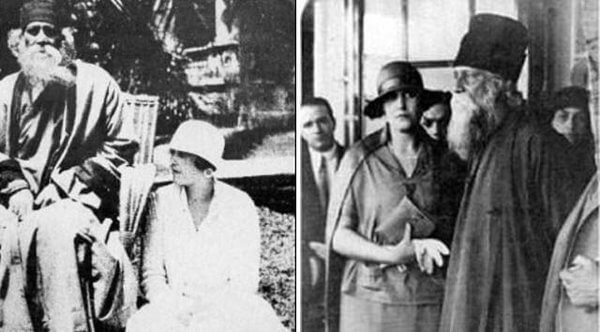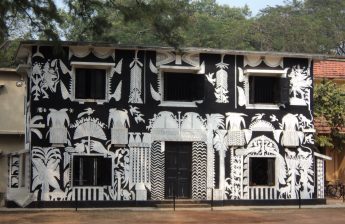Reading Time: 3 minutes
Ruchira delves into the unconventional love story between Rabindranath Tagore and Argentine intellectual Victoria Ocampo, revealing the song’s inspiration and a fascinating cross-cultural connection, exclusively for Different Truths.

Ask any Tagore aficionado (Bengali or otherwise) to croon a few lines from any one of their favourite songs and they almost invariably zero in on, Ami chini go chini tomare ogo bideshini (I know thee, O stranger). However, I am sanguine, few among them would be aware of the antecedents of the song and its significance.
And thereby hangs a tale. Tagore penned this as a paean to Victoria Ocampo, an Argentine author, intellectual, feminist and one of the most prominent South American women of her era.
Many moons ago in November 1924, on his way to Peru, Tagore then 64 y/o made a detour to Buenos Aires (Argentina) owing to a severe bout of influenza. He was well known in South America, and his works were read, not only in academic circles but also by ordinary local folks. Shortly afterwards he met the beautiful, aristocrat 34 y/o Victoria Ocampo.
An avid fan of literature she had already read Andre Gide’s French translation of “Gitanjali” the anthology of poems which had fetched him the Nobel prize, about a decade earlier. However, meeting Tagore (whom she had hero-worshipped for long) had gone beyond her wildest dreams. Hearing of Tagore’s illness, she went to the hotel in which the poet and his secretary Leonard Elmhurst were putting up and finally persuaded them to lodge in her palatial villa, Miralrio San Isidro.
The ambience was idyllic and breathtaking: the villa was located amidst a verdant landscape with the river Plata flowing quietly nearby. It was but natural for their ‘platonic’ love to bloom. Tagore’s two-month-long sojourn proved to be a memorable one for both. One-third of Tagore’s poems in the collection titled, “Purabi” are believed to be inspired by his Argentine Muse. Tagore christened her as Vijaya. More importantly, he helped her found a literary journal which he aptly named “Sur”. Thereafter the twain had just one brief meeting, in Paris, in 1930, but maintained regular correspondence till Tagore’s demise, in 1941.
Numerous authors and scholars who have written and researched prolifically on the Tagore–Ocampo ties have miserably failed to gauge their intellectual and spiritual ideas. Rather they tended to regard it as a passionate liaison between a Man and a Woman. However, a sensitive and discerning scholar or critic would surely that their extraordinary intellectual caliber, eights, cosmopolitan global outlook coupled with spiritual inclinations, catapulted their relationship to an ethereal plane.
To commemorate the centenary of this epoch-making meeting a one-of-its-kind musical event was organised in mid-May (coinciding with the month of the Bard’s birth) at the upscale India International Centre, New Delhi featuring the popular Kolkata-based Rabindra Sangeet exponent the lovely Aditi Gupta. The event commenced with a review of the Tagore and Victoria Ocampo tale by Professor S.P Ganguly, a JNU alumnus and a profound scholar of Hispanic Studies. He was followed by Aditi, whose brilliant one-and-a-half-hour long dexterously woven narrative on the iconic relationship between Tagore and Victoria, enthralled the viewers.
Aditi’s mellifluous songs were spontaneous outpouring of her heart. The selection of the lyrics was commendable – each of them passionate and romantic with a subtle touch of mysticism. The list included perennial favourites viz., “Ami tomaro songe bendhechi amaro pran (a musical thread binds my heart with thine), Sunil sagarer shyamal kinare (on the verdant shores of the turquoise ocean I beheld exotic one) Shesh nahi je shesh kotha ke bolbe (who can predict the end of life? It’s an eternal undying circle), and many more. Aditi Gupta was accompanied by Mihir Bose on the keyboard and Nilanjan Sengupta on the tabla and percussion.
Photos sourced by the author
















